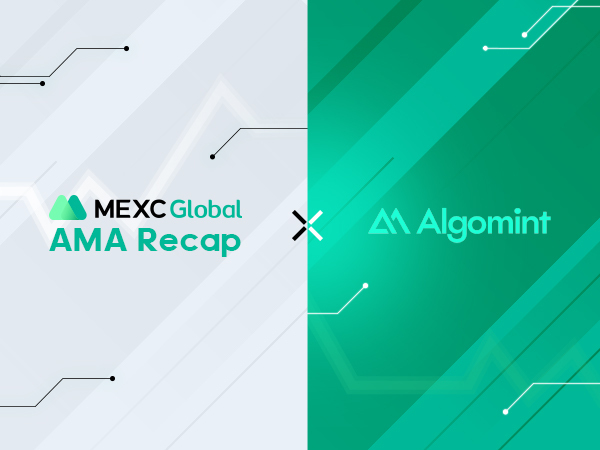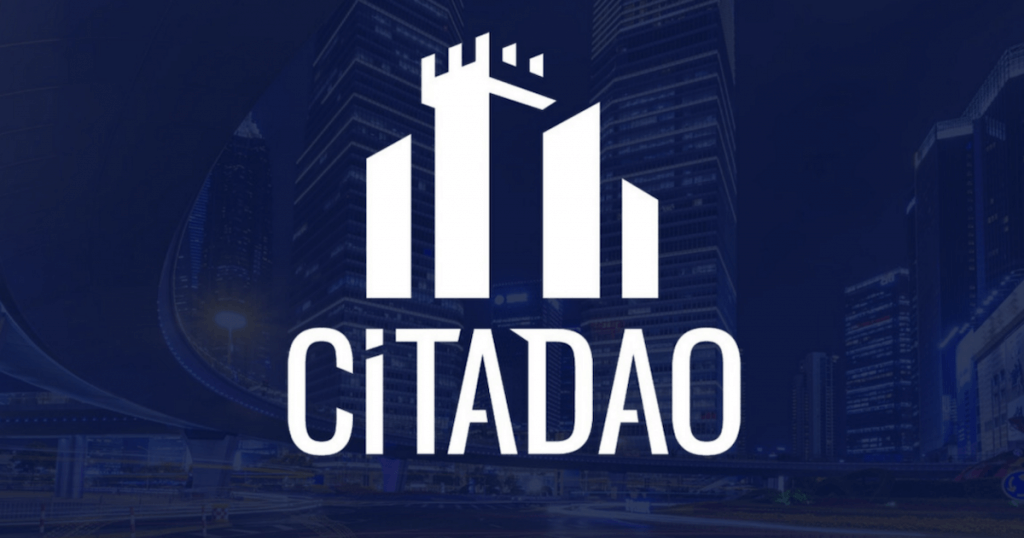In this Telegram AMA recap, you’ll find insights about the Algomint (goMINT) project. In an event hosted by Miranda from MEXC, you will meet Michael Cotton, co-founder of Algomint and Meld Ventures.

Introduction to Algomint AMA Member:
I am the co-founder of Algomint and Meld Ventures. I’ve been an entrepreneur in the precious metals industry since I was 18. Having successfully founded several successful businesses through my career specializing in identifying new opportunities for growth and innovation.
Myself and @AJ_Milne founded Algomint approximately 9 months ago and have been building out the project with a fantastic team ever since.
Questions from community to Algomint:
Q1:
Miranda: First can you tell us what is Algomint? Can you share with us more in detail?
Michael: Algomint though in its simplest form is a bridge in reality with the new capabilities that are coming it is better described as a liquidity network, which will allow the flow of equity between chains, help consolidate like-for-like assets to allow for more efficient trading and stabilise the market through using the bridged liquidity to arbitrage.
A majority of this capability will initially be launched on Algorand but we will be launching across more chains as we further develop the product.
So there are 4 key pieces to the project:
1. Bridge.
2. Aggregator.
3. Automated arbitrage.
4. Governance through the $goMINT token.
Combined it takes what is traditionally a base bridge and turns it into something far more powerful.
Q2:
Miranda: Can you tell us what triggers you to launch Algomint? What are some of the real-world problems/ pain points that Algomint aims to solve?
Michael: Initially it would be to enter and exit the Algorand ecosystem, for example bringing over BTC, ETH or USD to yield farm, trade or participate in other activities on Algorand.
For example there is a large incentive program kicking off in the ecoystem in the coming months.
But also to access ecofriendly capabilities, Algorand is a carbon negative blockchain, lightning fast, low cost, quantum resilient and plenty more.
Beyond bridging in the future it would be to access our aggregator, which through complex minting, burning and trade routing results in the best prices possible for a DeFi trade.
Q3:
Miranda: Thanks Micheal, next can you tell us what is the role of $goMINT in Algomint? Would you tell us more about its tokenomics?
Michael: Most definitely.
The token itself long term will be used to govern the platform, we have taken inspiration from the Synthetix DAO structure in the way we see governance taking place.
Governance becomes particularly important when you consider the basketing capability we will be utilising for like-for-like assets where adoption into these baskets will be critical for other stables coins wanting to access the ecosystems Algomint is connected to. So holding $goMINT becomes quite important.
Initially we will also be providing rewards to governs in the form of $goMINT tokens, but long term the protocol will be building out its own liquidity converting all fees collected into an LP position to create in many ways a deflationary system while also deepening liquidity. But you can read more in our litepaper on this 🙂
Q4:
Miranda: Are there any exciting news or updates with regards to Algomint that you would like to share with the users?
Michael: That there is thanks Miranda, we actually have out token release on the 30th of March across three DEXes (Tinyman.org Pact.fi and algofi.org) on Algorand. It will be a native Algorand launch (the first of its kind) which we are excited about.
We currently have BTC and ETH bridging live but we have several other tokens we will be bridging soon with $HNT and a range of ERC-20 tokens to come.
You can also checkout our website to see the roadmap and plenty of other info. algomint.io
Q5:
Miranda: Alright Michael, here come’s our last question: if you were to summarize your project in ONE word, what would it be? Why?
Michael: Hmmm that is a tough one.
As much as I would like to say ‘stupendous’, as I have always wanted to use that word somewhere 😂
I will go with – Efficient.
We really are taking the traditional bridging technology that sacrifices capital efficiency with certainly of interoperability and safely generating value through the aggregation and arbitrage functions.
Sorry definitely more words than I was meant to use.
Free-asking Session to Algomint
Q1. Revenue is an important aspect for all projects to survive and sustain. So how does your project plan to generate profit and revenue?
Michael:
First up, great question Ruthann! This is definitely extremely important.
We believe just relying on bridging fees isn’t enough, which is why we have been overlaying that functionality with the aggregator for cross-chain aggregation and automated arbitrage. Both of which generate value for the protocol itself (revenue) that is also not periodic and has velocity.
It also generates value for others, ensuring its ongoing use and additional revenue for the protocol.
Q2. Do you have any plan for burning tokens in the future to reduce the supply of the token and increase its investment attractiveness?
Michael:
Another great question, thanks Hoffman.
At the moment no, but this would be decided by governance in the future so it could happen at a later time.
Rather than the buy and burn model, we will initially be deploying the buy and make model. Which instead of burning deploys the acquired tokens into a liquidity pool deepening the liquidity in the token which is then a permanent liquidity position which can help greatly long term in other areas such as allowing the token to be accepted on Money Markets.
Q3. Do you have any plans to attract non-crypto investors to join your project? Because the success of a project attracts more investors who haven’t yet entered the crypto world. What are the plans to raise awareness about your project in the non-crypto space.
Michael:
Interesting question Han.
We are seeing this as definitely a part of our strategy but this will be achieved in a more indirect manner. For example, the BTC and ETH we bridge (wrap) through Algomint called $goBTC and $goETH also have the carbon footprint neutralised and then sit on Algorand which is a carbon negative blockchain. Meaning you can trade, send, stake the assets without the environmental impact and with all the power of the Algorand blockchain (fast, low cost, instant finality) so we are looking at having the assets accepted through traditional outlets. The ability to buy a coffee with BTC or ETH for example.
But on top of this we see the cross-chain aggregator becoming a settlement layer for other businesses where they can utilise it finalise transactions at the best prices possible regardless of what blockchain they are on, so everything from Artists selling NFTs to traditional retailers.
I think it is this kind of long term business strategy and exposure that will help us see noncrypto users potentially invest into Algomint.
Join MEXC and Get up to $10,000 Bonus!
Sign Up


